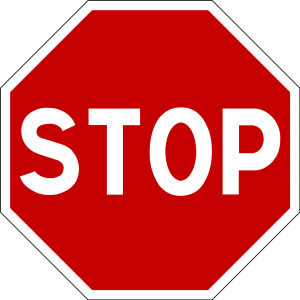You recently announced that you do not intend to vaccinate your child because you have been listening to the rumors linking vaccination to autism.
I have some words for you:
Stop. Just stop.
You are actively contributing to the spread of pseudoscientific bullshit that is threatening to set the country back decades in health outcomes.
Remember measles? Yeah, we had completely eradicated that bad boy. And now it’s back, with 16 new cases recently reported in NYC and 175 cases nation-wide in 2013. The outbreak is commonly believed to be caused by whacakdoodles like yourself who believe that vaccinating your kids will cause autism.
Listen, girl, I am a hardcore conspiracy theorist (don’t even get me started about my thoughts on Big Pharma). But there is no reason not to vaccinate your kids. The whole reason parents bought this line of garbage was because of a 1998 research paper that has been thoroughly debunked. That study was retracted and the author stripped of his medical license for “careless disregard” for the children in his study.
On the other hand, countless academic papers have discredited the notion that vaccines cause autism, as you can see in this comprehensive review of the literature. But despite this, hippie crunchy parents around the country have completely ignored the evidence and adopted Anti-Vaccination as their own cultish movement.
Your choices would be fine if they were just personal, but they affect more than just your child. Vaccinations exist because of something called “herd immunity.” The idea is that by vaccinating everyone– the herd– you are protecting the most vulnerable populations, such as the elderly and infants, whose immune system might not be able to withstand the specific illness. As a carrier, even if you yourself are not sick, you endanger the lives of others and not vaccinating your kids has major public health implications.
Oh, Kristin– I loved Singled Out as much as the next girl, but I don’t take medical advice from goddamn Jenny McCarthy. You’re better than this. The Cutler babies deserve more.
Sincerely,
A Concerned Citizen
p.s. Would love to talk to you more about the Laguna Beach Days. Tweet me @megscarlson
Heroin-omics
Two weeks ago, a friend mentioned an acquaintance having used heroin recently and I instantly recoiled.
“Who does heroin?!”
Steeped in long-entrenched stereotypes about drug abusers– junkies who walk the inner-city street, homeless tweakers– I couldn’t imagine anyone young and, to be frank, not poor, doing such a thing. Heroin was a hard drug; a last resort (note: I’m embarrassed to have had such a naive problematic point of view and have since changed my tune).
But my friend assured me that heroin has become over the past decade a middle class drug. A week of internet research confirmed: heroin is the young, white suburban recreational drug of choice for some very distinct economic and cultural reasons. More light has been shed on the issue by the untimely demise of Philip Seymour Hoffman Sunday, suspected of dying from opiate overdose, preceded by the shocking (or not-so-shocking if you’ve been privy to his addiction issues) overdose of Cory Monteith not long before.
Heroin use increased precipitously in the mid-2000s (especially in Chicago, which leads the nation in emergency room visits due to heroin). From 2007 to 2012, the number of heroin users ages 12 and up jumped from 373,000 to 669,000– a shocking 79 percent increase.
The reason for this explosion is decidedly economic: heroin is cheap. As cheap as $5-$10 a bag. Much cheaper than what it was in the ’80s. The affordability, however, belies another important factor. People are using heroin as a cheaper alternative to prescription painkillers, like OxyContin or Vicodin. It is perhaps the only example I will ever use of people truly being “rational actors,” in the economic sense of the phrase.
I’m not going to delve into the cultural and historical factors behind the rise of prescription painkillers– that treatise would implicate the entire medical system in the America. However, it is important to note that if public health experts want to address the heroin epidemic, the first step is the dangerous rise in prescription drug use in the country.
And it needs to be addressed quickly, because there are some very scary implications in this trend. While prescription drug abuse is no laughing matter, prescription drugs are carefully dosed and regulated. When you consume them, there is a pretty clear expectation of what is going to happen, and even the specific risks you incur. Heroin, for obvious reasons, is a different story. As a street drug, it is impossible to know the strength of what you are taking, or the ingredients in it. Recently, there has been a particularly dangerous batch of Fentanyl-tainted heroin bombarding the Mid-Atlantic responsible for scores of deaths.
It makes me uncomfortable to use tragedies as a soapbox for change, but if there is any good to come from Hoffman’s death, hopefully it is the impetus to examine a growing public health concern.


